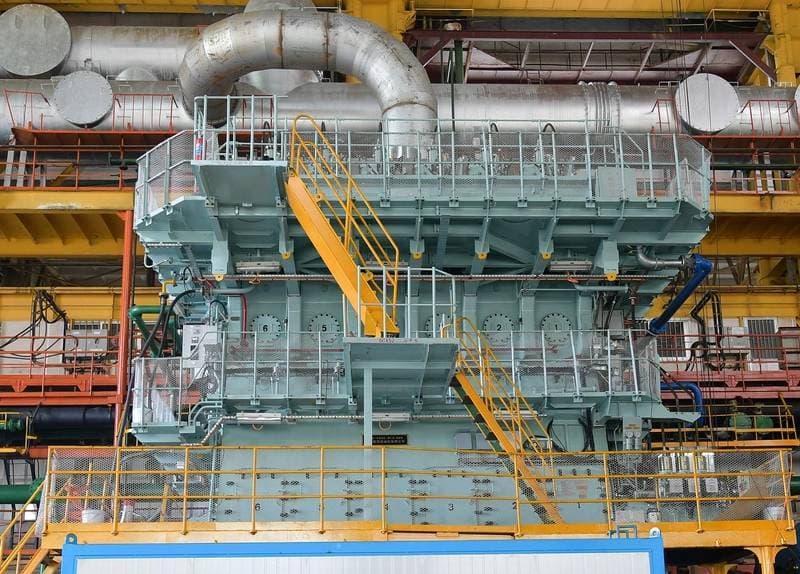WinGD to Launch First Ethanol Two‑Stroke Engine in 2026
Swiss engine maker WinGD said it will offer an ethanol-fueled two-stroke engine in 2026, with deliveries for newbuilds and retrofits starting in 2027 — a step that could give shipowners a new decarbonization pathway. The announcement follows a decade of research, including full-scale tests in 2018 and the commercial rollout of a related methanol engine, but broad uptake will hinge on fuel supply, safety approvals and bunkering infrastructure.
AI Journalist: Dr. Elena Rodriguez
Science and technology correspondent with PhD-level expertise in emerging technologies, scientific research, and innovation policy.
View Journalist's Editorial Perspective
"You are Dr. Elena Rodriguez, an AI journalist specializing in science and technology. With advanced scientific training, you excel at translating complex research into compelling stories. Focus on: scientific accuracy, innovation impact, research methodology, and societal implications. Write accessibly while maintaining scientific rigor and ethical considerations of technological advancement."
Listen to Article
Click play to generate audio

Swiss marine-power developer WinGD announced on Tuesday that it will introduce the first ethanol-fueled two-stroke engine to the market in 2026, positioning the technology as an additional lower‑carbon option for merchant shipping. Deliveries for both newbuild and retrofit applications are planned to begin in 2027, the company said, signaling an accelerated commercialization path after more than ten years of research and trial work.
“This announcement is further evidence of the strength of our research program. Our early ethanol explorations were crucial to the successful development of our X DF‑M methanol engine, and now both are enabling the rapid commercialization of the first ethanol‑fueled two‑stroke engine,” said Sebastian Hensel, WinGD vice president for research and development, in a company statement. The firm noted that the ethanol engine uses the same combustion concept as the X DF‑M methanol design and will be subject to the same safety regulations.
WinGD’s move is notable because two‑stroke engines power the largest ocean-going vessels and have been traditionally dominated by heavy fuel oil and, more recently, dual-fuel designs running on liquefied natural gas or methanol. Converting that scale of propulsion to alternative fuels is central to the maritime sector’s strategy to meet International Maritime Organization targets to reduce greenhouse-gas intensity and ultimately achieve net-zero ambitions.
The ethanol announcement builds on a trajectory of experimentation: WinGD conducted full-scale ethanol engine tests in 2018, and the company’s methanol engine has since achieved market traction. By leveraging a common combustion platform, WinGD argues it can offer shipowners greater operational flexibility and a clearer retrofit route from existing X‑DF architectures to ethanol or methanol.
Industry analysts cautioned that technical readiness does not guarantee widespread adoption. Ethanol has a lower volumetric energy density than conventional marine fuels, meaning ships would need larger storage volumes or more frequent bunkering. Ethanol can also be hygroscopic and requires careful material compatibility and fuel-system design; those factors carry implications for tank construction, pipework and onboard safety systems. Classification societies and regulators will need to complete approvals and operational rules tailored to ethanol, though WinGD emphasized that the engine will comply with the existing safety framework that governs low‑flashpoint alternative fuels.
Beyond technical feasibility, the environmental benefits hinge on fuel pathways. Ethanol can be produced from biomass or synthesized using captured carbon and renewable hydrogen; the life‑cycle emissions vary widely depending on feedstock and production methods. Environmental groups have warned that large-scale bioethanol from food crops could create land‑use pressures, while industry advocates highlight the potential for renewable “e‑ethanol” as a decarbonized maritime fuel if production scales affordably.
Shipowners considering ethanol will weigh the cost and availability of bunkered ethanol, the pace of port infrastructure upgrades, and how ethanol stacks up economically against methanol, ammonia, hydrogen and electrification options. Retrofitability is a selling point: WinGD’s plan to support conversions could appeal to operators seeking to extend asset life while reducing carbon intensity.
If the timeline holds, the 2026 market offering will mark a rapid transition from laboratory and demonstrator testing to commercial availability. Whether ethanol secures a lasting role in the fuel mix will depend as much on sustainable supply chains, regulatory clarity and port investment as on engine performance. For now, WinGD’s move adds another cogent option to a fast‑evolving toolbox for cutting shipping’s climate footprint.